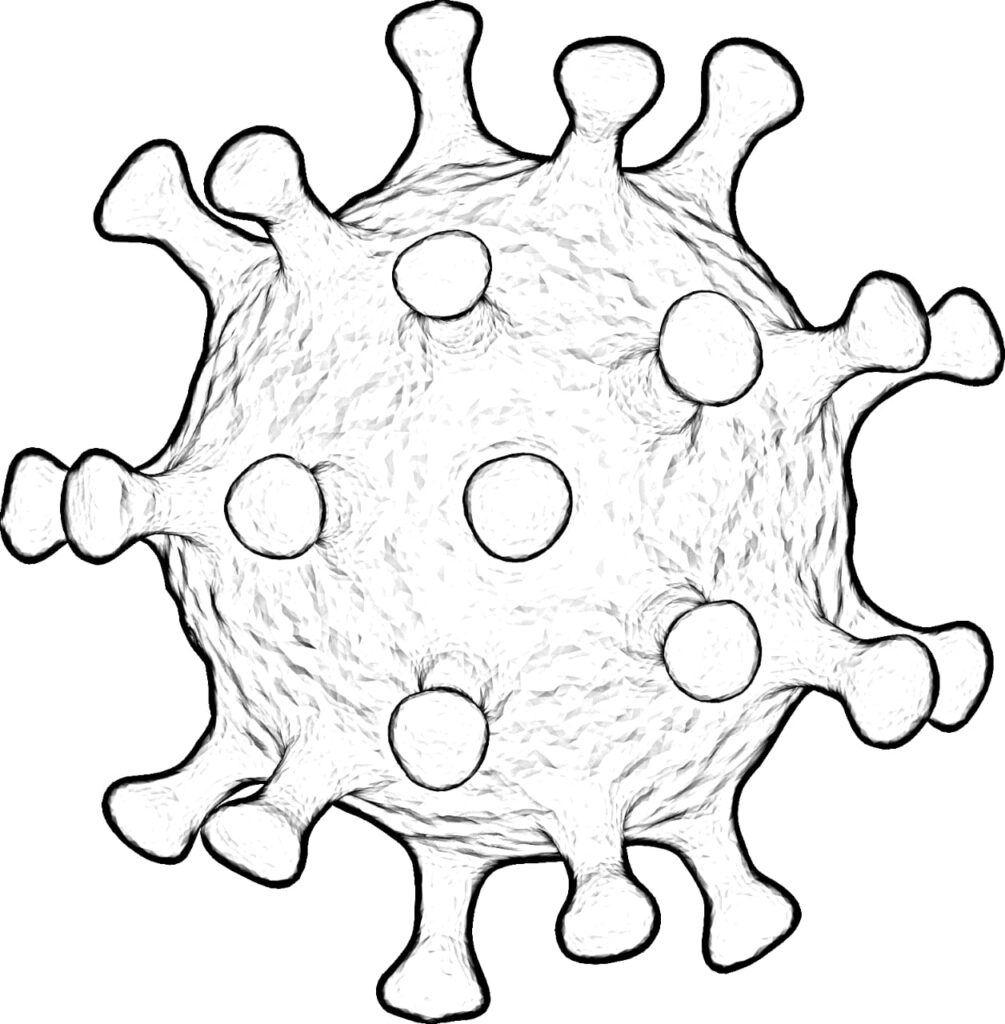Easy drawing of a virus
Easy drawing of a virus, Do you know the difference between a virus and a bacteria? Virus coloring pages pdf, Virus coloring sheet, Virus coloring, Virus coloring pages, Simple drawing of a virus, Coronavirus drawing.
Understanding the Differences Between Viruses and Bacteria
In the realm of microscopic organisms, viruses and bacteria reign supreme. While they may share some similarities, these entities possess distinct characteristics that set them apart. This article aims to shed light on the contrasting features of viruses and bacteria, highlighting their structures, replication methods, and effects on living organisms.
- Structure: Viruses: Viruses are acellular entities composed of genetic material (DNA or RNA) enclosed in a protein coat called a capsid. Some viruses may also possess an outer envelope. Viruses lack the ability to carry out vital life functions independently and require a host cell to replicate.
Bacteria: Bacteria are single-celled microorganisms with a simple cellular structure. They possess a cell membrane, cytoplasm, and a single circular DNA molecule, often accompanied by plasmids. Bacteria can be classified into various shapes, including spheres (cocci), rods (bacilli), and spirals (spirilla).
- Replication: Viruses: Viruses invade host cells and hijack their cellular machinery to replicate. They inject their genetic material into the host cell, which leads to the production of new viral components. These components assemble to form new viruses, eventually causing the host cell to burst, releasing the replicated viruses to infect other cells.
Bacteria: Bacteria reproduce through binary fission, a process in which a single bacterium divides into two identical daughter cells. Under favorable conditions, bacteria can multiply rapidly, forming colonies that can be seen with the naked eye. Some bacteria also possess the ability to exchange genetic material through a process called conjugation.
- Effects on Living Organisms: Viruses: Viruses are responsible for a wide range of infectious diseases in humans, animals, and plants. They can cause mild to severe symptoms, including respiratory illnesses, gastroenteritis, and even lethal conditions such as AIDS and Ebola. Viruses can also infect bacteria, known as bacteriophages, playing a role in the regulation of bacterial populations in various ecosystems.
Bacteria: While certain bacteria are beneficial and essential for the proper functioning of ecosystems, many bacteria are pathogens capable of causing diseases. Bacterial infections can lead to conditions such as pneumonia, urinary tract infections, and food poisoning. On the other hand, some bacteria are beneficial and are used in food production, waste management, and biotechnology.
Conclusion: Viruses and bacteria may both be microscopic organisms, but their differences are significant. Viruses are acellular entities that require a host cell for replication, while bacteria are single-celled organisms capable of independent reproduction. Viruses primarily cause diseases in various organisms, while bacteria can have both harmful and beneficial effects. Understanding these distinctions is crucial for developing effective strategies to combat viral and bacterial infections and harnessing the potential of beneficial bacteria in various industries.
Easy drawing of a virus

Bonus
Find out also on this site:
Drawing of a cute cat with a hat, Two cute dogs walking, bucket full of popcorn
Beautiful heart drawing, Cloud with cute face
Drawing of a sunflower, Drawing of a rabbit in the sky grace clouds
Beautiful christmas tree coloring page, cute dinosaur drawing
see also this drawing of a cute bee flying, Drawing of an elephant
Support our website
Paypal: colorlessdrawings@gmail.com
Any amount is welcome, thank you!